ALI CLE — Ethically Navigating the Three Rs: Lawyer Ratings, Rankings, and Reviews – Live Webcast, October 29th
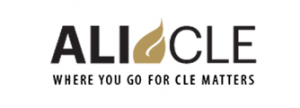 Of all the topics I have presented on in 22+ years of teaching law marketing ethics CLEs, my program on navigating the Three Rs—Ratings, Rankings and Reviews—may be my favorite. If you need your ethics credit, find your law firm often enveloped in dealing with the 3 Rs, or just enjoy the subject matter, join me for this live webcast on Tuesday, October 29, 2019 from 1-2 pm ET.
Of all the topics I have presented on in 22+ years of teaching law marketing ethics CLEs, my program on navigating the Three Rs—Ratings, Rankings and Reviews—may be my favorite. If you need your ethics credit, find your law firm often enveloped in dealing with the 3 Rs, or just enjoy the subject matter, join me for this live webcast on Tuesday, October 29, 2019 from 1-2 pm ET.
REGISTER NOW: Ethically Navigating the Three Rs: Lawyer Ratings, Rankings, and Reviews
In putting together the ALI program, I was amazed not only by how much new information and materials were out there, but how much this area of lawyer advertising ethics had changed in recent years—sometimes for the better, often not. Ratings and Rankings have continued to grow exponentially—as if that was even seemingly possible. Outcries over the years to clamp down on the proliferation of businesses in this space have not only gone unanswered but have led to even more players in the space. There is simply too much money to be made, and plenty of egos to feed. But it is the impact of online reviews that have had the greatest impact among the three Rs. I get more audience questions after a CLE presentation about painful and problematic first-hand experiences in an attorney having to handle the impact of a negative review. On the flip side, many law firms are finding that the online review space is not only unavoidable but can be lucrative.
 Marketing Attorney Blog
Marketing Attorney Blog


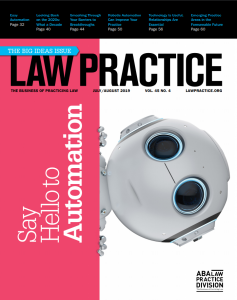 In the nearly 20 years that I’ve run my law marketing consultancy,
In the nearly 20 years that I’ve run my law marketing consultancy, 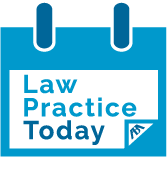
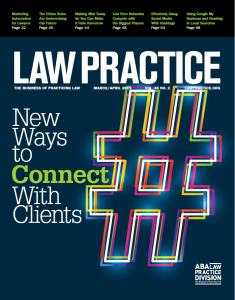 I read many articles on the morning after an Eagles win in my local newspaper, The Philadelphia Inquirer. On the day after a loss, I read a few less—but win or lose, I enjoy the Up/Down drill that points out the highs and the lows with a thumbs-up, thumbs-down, or simply two thumbs going sideways. So I thought I could copy the concept in what I plan on having as an annual column,
I read many articles on the morning after an Eagles win in my local newspaper, The Philadelphia Inquirer. On the day after a loss, I read a few less—but win or lose, I enjoy the Up/Down drill that points out the highs and the lows with a thumbs-up, thumbs-down, or simply two thumbs going sideways. So I thought I could copy the concept in what I plan on having as an annual column, 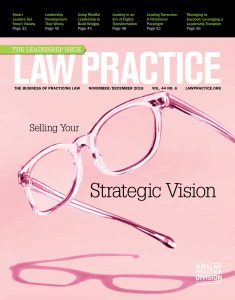 Perhaps life has really been about search all along. We search for the right job, the right spouse, the right schools, the right restaurants, pretty much the right everything. So Google has either made searching easier, or harder, depending on how you look at it.
Perhaps life has really been about search all along. We search for the right job, the right spouse, the right schools, the right restaurants, pretty much the right everything. So Google has either made searching easier, or harder, depending on how you look at it.

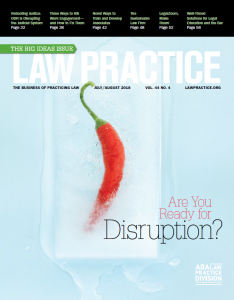 Whenever I pass a roadside diner promising something like “world’s best cherry pie,” I think about lawyer advertising restrictions. Because no law firm or lawyer could tout themselves as the best or greatest—and many of the taglines, phrases and symbols used to market products and services to consumers are restricted or outright prohibited in the legal profession.
Whenever I pass a roadside diner promising something like “world’s best cherry pie,” I think about lawyer advertising restrictions. Because no law firm or lawyer could tout themselves as the best or greatest—and many of the taglines, phrases and symbols used to market products and services to consumers are restricted or outright prohibited in the legal profession.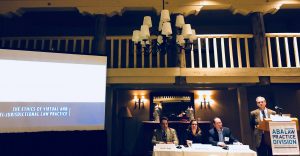 Recently, I had the privilege of serving on a panel at the American Bar Association’s Law Practice Division continuing legal education program on the ethics of virtual and multi-jurisdictional lawyering in Santa Fe, New Mexico. The program was co-sponsored by the State Bar of New Mexico, and took place on May 18, 2018 at the Inn and Spa at Loretto.
Recently, I had the privilege of serving on a panel at the American Bar Association’s Law Practice Division continuing legal education program on the ethics of virtual and multi-jurisdictional lawyering in Santa Fe, New Mexico. The program was co-sponsored by the State Bar of New Mexico, and took place on May 18, 2018 at the Inn and Spa at Loretto.